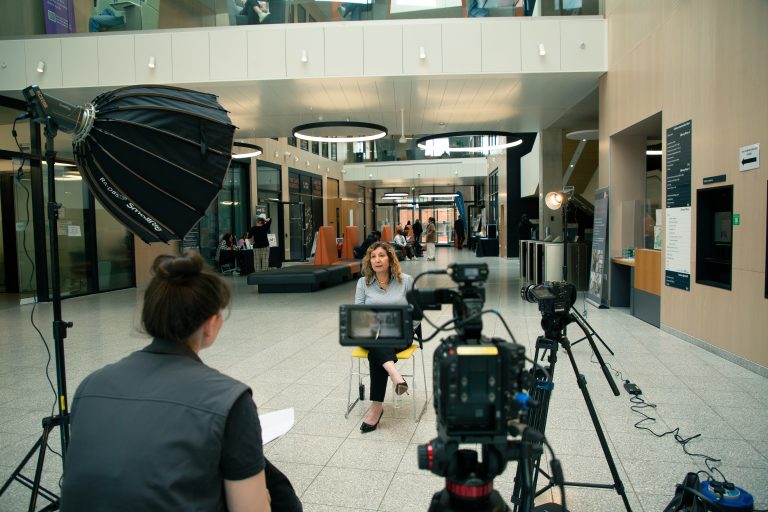Last week we posted a blog on the basic principles of how to put together an exhibition video production specifically for conferences and exhibitions. The main points were:
- Don’t just think about live footage, consider animated videos too
- No one will hear the sound in your exhibition video so ensure it can still be followed without audio
- Have little packets of information rather than a long story so that people who start watching halfway through can still understand the message
- Create the video in a way that you can re-use it after the event to ensure a better return on investment
The reason for the blog was because we were approached by a client to help them make their exhibitor space stand out and help people they couldn’t speak to immediately get their value proposition. In response we created the following video edit which we’d love you to watch and then we’ll walk you through our thinking and how we put it together.
Find a clever concept for your video production
The event was a Google Cloud event and we thought it would be great to use an approach called ‘material design’ as the style. Material design was created and launched by Google on June 25, 2014, at the 2014 Google I/O conference and was a style that was described in the following way:
“Material Design makes more liberal use of grid-based layouts, responsive animations and transitions, padding, and depth effects such as lighting and shadows”
It was conceived to make user experience and user interface design on web based products much easier to navigate, much simpler in their transitions and also their ability to respond to changing states (such as the size of the screen you viewed a website on). The great thing is that this style really easily and brilliantly translates to video too. The video production has constant motion, which makes it really interesting visually through the delivery of a constant pace. This is really important on a video production with no sound as viewers only have visual stimulus to keep them engaged which means that it needs to be in constant motion, but not really quickly or really slowly, a manageable and calming pace is required.
Establish the best way to get the messages across
We knew we couldn’t use sound, so we had to find a way to deliver messages on screen. Therefore when we locked down the concept, we decided that using on screen text would be most effective. We approached it by asking several questions that represent the challenges clients were most concerned about. These would really resonate with the audience walking past, instantly creating an empathy and connection and (hopefully) make them stop and watch some more. This would allow time for one of the team on the stand to approach them.
Keep the visual theme unified throughout
The next segment of text explained how the team overcame these challenges, using Google products and services to deliver outcomes. To keep with the Google theme we used their icon suite so that everything was on brand.
The visuals we used to support the messaging in the video were all very simple, yet quite bold on each of the screens. This was because it needed to be very obvious what was going on, as there was an absence of a voiceover explaining. We often create the graphics used on videos in Adobe Illustrator and then ‘layer’ them, so each of the layers can be animated and move independently of each other. We create them in illustrator as it gives us more options to develop complex assets. However because of the simplicity of material design, we were able to create almost all of the graphics in Adobe After Effects, which is the software we use to deliver animated video production, saving some time (and therefore money) for the client. Another great benefit of material design.
Find a strong closing statement or sequence
Finally, we wanted a strong closing statement to the video. One that projected competence and expertise, but tied in with the rest of the production. Because at the start of the video production we had been asking rhetorical questions about pain points that clients have we thought it would be good to tie it all up neatly. This is when we came up with the statement “whatever your question is, we’re ready to answer it”- a powerful and confident way to encourage potential customers to talk to the team on the stand.
Create different versions for different uses
To make sure that there was additional mileage in the video production beyond the exhibition, we created a secondary version that had more of the GoReply branding on (unnecessary at the exhibition as the whole stand was heavily branded), and contact details to encourage engagement when viewed elsewhere on the web. We also added a soundtrack that the animated video was timed to, so when viewed on social media or the client website, it added a level of quality and enjoyment for the viewer.
If you have an upcoming event, conference or exhibition and want to stand out, contact us for a conversation about how we can help. Alternatively if you want to see how we can film the event to encourage more people to attend, why not read our blog on conference video production.

